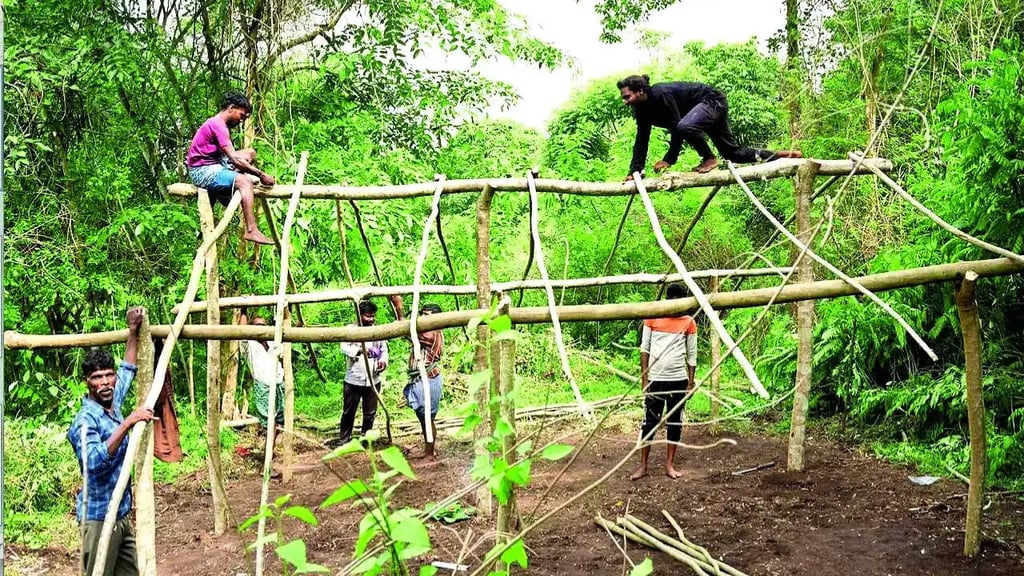
Jenu Kuruba Tribes Occupy Land in Nagarahole Tiger Reserve: A Bold Push for Justice and Ancestral Rights
A powerful account of the Jenu Kuruba tribe's 2025 reoccupation of land in Karnataka's Nagarahole Tiger Reserve. Explore how this bold move challenges India's conservation policies, highlights tribal rights under the Forest Rights Act, and ignites a national debate on coexistence between indigenous communities and wildlife.
NEWS/CURRENT AFFAIRSJUDICIARYNEPOTISM/SOCIAL ISSUESAWARE/VIGILANT
Keshav Jha
5/12/20253 min read


Karnataka, 2025 — In the dense, tiger-rich jungles of the Nagarahole Tiger Reserve, a centuries-old relationship between people and nature is being tested again. The Jenu Kuruba tribe, Karnataka’s forest-dwelling indigenous community, has launched a peaceful but determined occupation of their ancestral land, sparking a new chapter in India’s debate on tribal rights, wildlife conservation, and state authority.
Who Are the Jenu Kuruba?
The Jenu Kurubas (meaning “honey collectors” in Kannada) have lived in the Western Ghats for generations, long before the forest was declared a tiger reserve. They are known for their unique ecological intelligence, gathering wild honey, tubers, herbs, and firewood in harmony with the land. Recognized as a Particularly Vulnerable Tribal Group (PVTG), they are among the most marginalized in India—socially, economically, and politically.
2024–2025: Occupation or Restoration?
Since late 2024, hundreds of Jenu Kuruba families began a grassroots reoccupation of forest patches inside the Nagarahole Tiger Reserve, declaring:
“We did not encroach. We returned home.”
Armed not with weapons, but with bamboo huts, traditional tools, and decades of legal neglect, they reclaimed space in the forest heartland from which they were forcefully evicted over the past 40 years.
In early 2025, their actions caught national and international media attention as they hoisted handmade flags reading:
🟤 "This is our land. We are not intruders."
What Triggered the Movement?
This reoccupation was not spontaneous. It followed:
Continuous rejection of over 1,300 Forest Rights Act (FRA) claims by the Karnataka government.
An alarming increase in tiger conservation funding being used for militarized patrols and tribal evictions.
Ongoing delays in the implementation of Community Forest Rights (CFR), which legally allow forest dwellers to sustainably live on and govern their land.
What’s more, in March 2025, Karnataka began pushing a new "Eco-sensitive Zone Enforcement Policy," under which over 5,000 tribal families across Bandipur and Nagarahole face potential relocation.
The Government’s Reaction
Forest officials and the Karnataka State Wildlife Board have declared the occupation illegal, citing the Wildlife Protection Act, 1972. In response, forest guards began confiscating tribal property, demolishing temporary huts, and threatening arrests.
However, this enforcement has drawn widespread criticism from
National Human Rights Commission (NHRC), which has taken suo moto cognizance of potential rights violations.
UN Special Rapporteur on Indigenous Peoples, who raised concerns over forced evictions and exclusion from forest governance.
Supreme Court lawyers, who argue that the Forest Rights Act of 2006 supersedes older wildlife laws.
The Human Cost of “Conservation”
Conservation, while essential, has come at a deep human cost for the Jenu Kurubas. Since their first eviction in the 1970s:
Thousands have been pushed to the edge of poverty.
Over 60% of displaced Jenu Kurubas live below the poverty line.
Young tribal children are often cut off from education, nutrition, and healthcare due to poor resettlement facilities.
Many now live in plastic-sheet settlements on forest fringes, without clean water, electricity, or schools—far from the forests that once nourished them spiritually and economically.
Indigenous Knowledge as a Climate Solution
Ironically, global climate experts now recognize that indigenous stewardship is critical to tackling biodiversity loss and climate change. The IPBES Global Assessment Report (2024) praised tribal land management for leading to lower deforestation rates and higher biodiversity indices than state-managed reserves.
A recent IISc Bangalore study (2023) even concluded that tribal-managed forests in Kodagu and Wayanad showed more tiger sightings and healthier tree cover than core areas managed without local input.
Political Echoes and Growing Support
This tribal push has catalyzed a broader political and activist wave:
Rajya Sabha MP from Karnataka, Anjali Prasad, recently raised the issue in Parliament, demanding urgent implementation of the FRA.
Renowned actors, environmentalists, and journalists—like Prakash Raj, Dia Mirza, and Nikhil Wagle—have lent their voices to the cause.
A viral social media campaign, #JusticeForJenuKurubas, has gained over 2 million impressions in less than a month.
Moreover, the All India Adivasi Mahasabha has declared May 2025 as “Adivasi Forest Reclamation Month,” with solidarity marches planned across tribal belts in Jharkhand, Odisha, Chhattisgarh, and Tamil Nadu.
A Legal Turning Point?
In April 2025, the Karnataka High Court admitted a Public Interest Litigation (PIL) filed by tribal lawyers and NGOs against the state’s “illegal evictions and FRA violations.” The court has asked the state government to:
Submit a full audit of pending FRA claims.
Justify any displacements post-2006 under conservation acts.
Propose a rehabilitation and coexistence plan by July 2025.
This could become a landmark case, setting the tone for how India treats its indigenous stewards in the face of climate, conservation, and capitalist expansion.
The occupation of Nagarahole by the Jenu Kurubas is not just a protest—it’s a spiritual homecoming, a civil rights movement, and a demand for ecological justice. As India balances its global environmental commitments with domestic tribal policies, this struggle forces a key question:
Can tigers and tribals truly coexist, or must one be sacrificed for the other?
If India truly wants to lead on climate and sustainability, it must start by listening to its first conservationists—the forest dwellers themselves.
Subscribe to our newsletter
All © Copyright reserved by Accessible-Learning
| Terms & Conditions
Knowledge is power. Learn with Us. 📚


